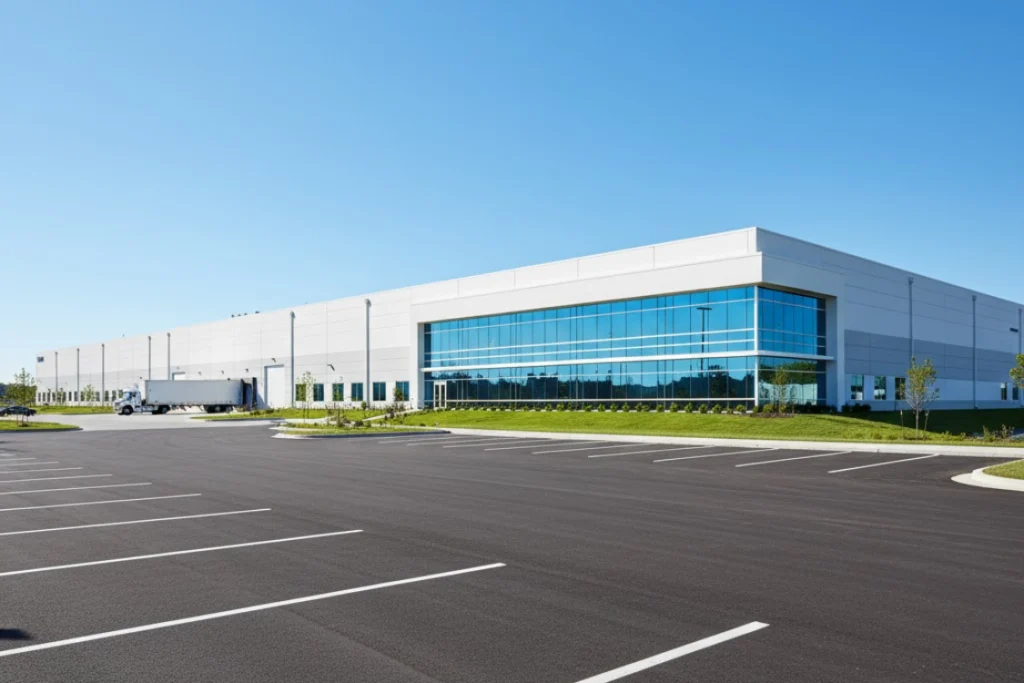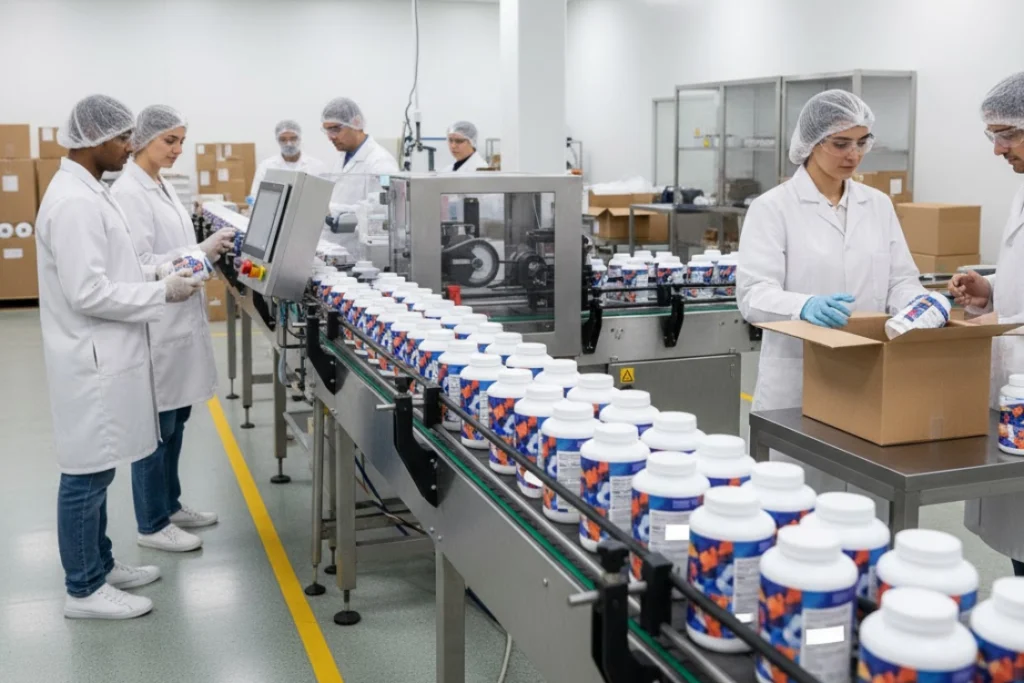Why does one supplement manufacturer quote twice the price of another for what looks like the same product? The answer often hides inside a detailed supplement manufacturing cost breakdown—a document that shows exactly where each dollar goes. It accounts for raw materials, packaging, labor, testing, and shipping costs that shape your final price.
Without that clarity, small pricing differences can turn into major losses. Inflated or hidden charges can quietly reduce profit margins and make it hard to maintain consistent pricing strategies. When you understand each cost, you can evaluate how efficient a manufacturing company really is and choose partners who share your standards. Transparency doesn’t just protect your budget; it strengthens the foundation of your supplement business.
Why an Itemized Cost Breakdown Matters
A clear cost breakdown gives you control. Seeing exactly where expenses fall allows your supplement brand to balance efficiency, compliance, and product quality while maintaining competitive pricing across a shifting supplement industry.
Transparency builds trust
A dependable supplement company lists every expense clearly, from active ingredients and printing labels to packaging materials and testing. This openness shows accountability and helps you compare offers between manufacturers more accurately. In a global dietary supplement market where credibility matters, transparency shows reliability far better than vague claims ever could.
Protecting your profit margins
Detailed quotes help you identify where adjustments can reduce manufacturing costs without lowering quality standards. Switching to different packaging materials, optimizing production processes, or adjusting production volume can lead to savings while preserving safety and consistency. These insights support long-term cost optimization and help protect your profit margins through smarter planning, not corner-cutting.
Signs of operational stability
Operational stability is one of the clearest indicators that a manufacturing company runs efficiently and manages its supply chain responsibly. When evaluating potential partners, look for the following signs that reflect consistent systems and financial discipline:
- Predictable pricing: Costs stay steady across multiple purchase orders without sudden or unexplained increases.
- Reliable sourcing: Ingredient suppliers and packaging materials remain consistent, preventing major cost swings.
- Documented processes: The manufacturer follows good manufacturing practices and provides clear records of production standards.
- Transparent communication: Any cost adjustments are explained in writing with supporting reasons.
- Controlled variability: Even when industry trends or raw material prices change, overall supplement manufacturing costs remain within a stable range.
Spotting these patterns early helps ensure that your supplement brand works with a partner capable of maintaining consistency, compliance, and long-term reliability.

Key Components of a Supplement Manufacturing Cost Breakdown
Each part of a supplement manufacturing cost breakdown explains a piece of the total price. Understanding how these items fit together helps you evaluate suppliers, negotiate fairly, and maintain quality.
Raw materials and ingredients
Raw materials often represent the largest portion of any manufacturing cost. Prices vary depending on purity, origin, and whether you’re producing standard or more complex formulations. High-quality supplements made with custom formulations or premium active ingredients naturally command higher prices. Working with suppliers who meet regulatory standards supports product safety, consistency, and a strong brand reputation.
Packaging and labeling
Every cap, bottle, seal, and label contributes to the cost. Printing labels, applying seals, and ensuring regulatory compliance all influence pricing. For supplement products sold through online shopping platforms, visual appeal becomes a key selling point that can attract consumers and support premium pricing without compromising compliance.
Quality control and testing
Testing verifies that dietary supplements meet industry and quality standards. It includes stability testing, microbiological checks, and laboratory verification. Third-party testing adds to initial costs but demonstrates accountability and adherence to regulatory compliance. Skipping or limiting this step increases the risk of inconsistency or non-compliance, which can harm brand reputation.
Labor and production
Behind every finished batch are skilled workers and specialized equipment. Labor covers blending, encapsulation, bottling, and inspection. These production costs change with production volume and formulation type. Manufacturers that follow good manufacturing practices maintain efficient workflows and consistent results, producing high-quality products that meet industry standards.
Shipping and storage fees
Shipping costs depend on freight type, destination, and package weight, but they also reflect how efficiently a company manages inventory throughout its supply chain. According to Callioni, de Montgros, Slagmulder, Van Wassenhove, and Wright (2005), excess inventory and poor coordination between storage and delivery points can create hidden costs that erode profit margins. Hewlett-Packard, for example, found that mismatched supply and demand led to high inventory-driven expenses, including warehousing and product devaluation.
For supplement brands, similar principles apply: maintaining balanced inventory, coordinating shipping schedules, and limiting unnecessary storage time can help prevent additional costs while supporting competitive pricing and smoother delivery operations.
Overhead and miscellaneous charges
Some quotes include setup fees, administrative expenses, or extras that can be unclear. These charges may be valid, but vague descriptions like “service charge” or “handling fee” should be reviewed. A transparent manufacturing company defines every fee so clients understand exactly what they’re paying for. Clear communication in these smaller items prevents larger misunderstandings later.

Checklist for Spotting Consistency vs. Instability in Costs
Before signing with a manufacturer, look for consistency across key areas that reflect operational control and stability.
- Raw materials show steady pricing across multiple purchase orders.
- Testing and compliance fees are clearly itemized.
- No hidden or miscellaneous fees appear unexpectedly.
- Packaging materials remain consistent in cost between batches.
- Shipping and storage are fully explained before production begins.
- The manufacturer provides a clear written policy on potential price changes.
Minor differences are normal, but unexplained swings in supplement manufacturing costs may signal instability or poor financial management.
Red Flags in a Manufacturer’s Cost Breakdown
Some quotes may look appealing but reveal risk once examined closely. Knowing what to watch for helps you avoid problems before production begins.
Vague lump-sum pricing
If a quote lists only one total without a breakdown, you can’t see how much goes to raw materials, labor, or testing. This lack of detail prevents fair comparison and makes it difficult to track which production processes influence the price. Always request an itemized cost sheet.
Hidden or surprise fees
Unannounced charges such as storage, rush handling, or special packaging suggest weak cost control. Ethical contract manufacturers disclose all potential costs upfront to prevent disputes. Transparency in pricing protects both sides and keeps the relationship professional.
Frequent unexplained changes
When quotes change from week to week or vary significantly between orders, it may show inconsistent sourcing or internal issues. A stable manufacturing company manages its suppliers and logistics to ensure predictable, documented pricing.
Lowest-price quotes without detail
When a manufacturer offers a quote far below competitors’, it’s important to investigate why. Deep discounts may reflect the use of lower-grade raw materials, limited testing, or shortcuts in required safety procedures. According to the U.S. Food and Drug Administration (2023), the agency is responsible for protecting public health by ensuring the safety, efficacy, and quality of regulated products, including how they are manufactured and distributed. This means that reputable contract manufacturers follow clear regulatory standards to produce high-quality supplements safely and consistently.
Choosing partners based solely on price can put your brand at risk, while prioritizing those who comply with FDA regulations helps maintain trust, reliability, and product integrity.

How to Use Cost Breakdowns to Build Stronger Partnerships
Understanding the details of a cost sheet transforms your role from buyer to collaborator. Clear numbers allow both sides to improve efficiency and create reliable systems that benefit the entire supplement industry.
Ask clarifying questions
A transparent partner will explain each charge clearly. Ask about sourcing, production processes, and how manufacturing costs are calculated. This openness builds trust and helps prevent miscommunication.
Compare across suppliers
Gather identical specifications from several manufacturing companies to see how their quotes differ. Comparing identical formulas highlights who’s truly optimizing production processes and who may be inflating prices. The data also helps identify industry trends that affect costs.
Negotiate fairly
Use the breakdown to discuss balanced adjustments, such as improving logistics or adjusting production volume, instead of demanding unrealistic cuts. Pushing prices too low risks compromising quality or regulatory adherence. Fair negotiations maintain customer satisfaction and build steady partnerships that last.
Clarity in Costs = Stability in Partnerships
A well-structured supplement manufacturing cost breakdown offers more than accounting—it reflects integrity and transparency. When the details behind raw materials, testing, and labor are visible, you can focus on producing high-quality supplements with reliable partners. In a competitive landscape where many factors influence cost, clarity remains your best safeguard for long-term stability and trust within the supplement industry.
Frequently Asked Questions
What is included in a supplement manufacturing cost breakdown?
It outlines every element of production costs, including raw materials, packaging, testing, labor, shipping, and overhead.
How do I know if a manufacturer’s pricing is fair?
Compare itemized quotes from multiple supplement manufacturing partners and look for consistent pricing across line items.
Why do some manufacturers avoid giving detailed cost breakdowns?
They may lack the systems for accurate cost tracking or prefer to protect profit margins through undisclosed markups.
Can a cost breakdown help me negotiate better rates?
Yes, it reveals where efficiencies, like improved packaging materials or better shipping costs, can reduce expenses without affecting compliance or quality.
What’s the biggest red flag in a supplement manufacturer’s cost breakdown?
Frequent unexplained price changes or hidden fees often point to operational instability within the manufacturing company.
References
- Callioni, G., de Montgros, X., Slagmulder, R., Van Wassenhove, L. N., & Wright, L. (2005, March). Inventory-driven costs. Harvard Business Review. https://hbr.org/2005/03/inventory-driven-costs
- U.S. Food and Drug Administration. (2023, November 21). What we do. U.S. Department of Health and Human Services. https://www.fda.gov/about-fda/what-we-do



